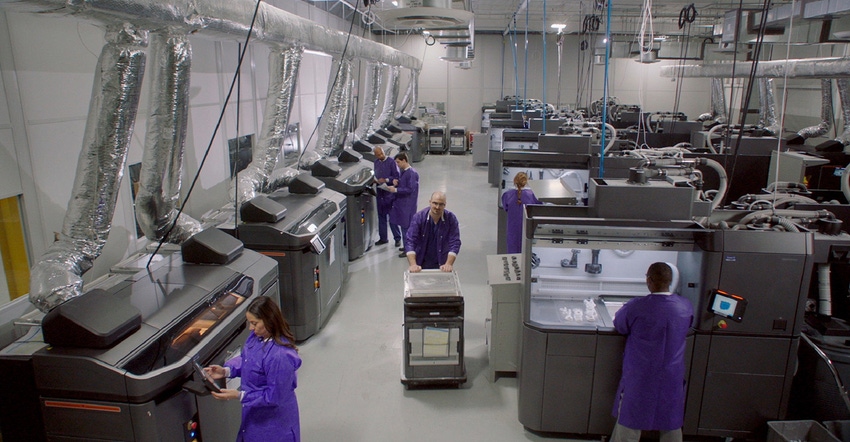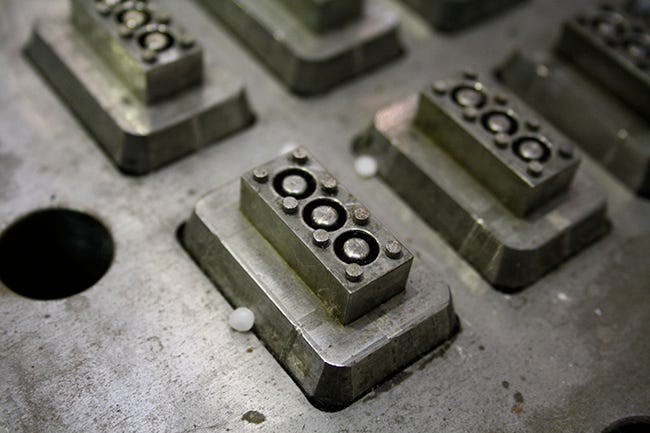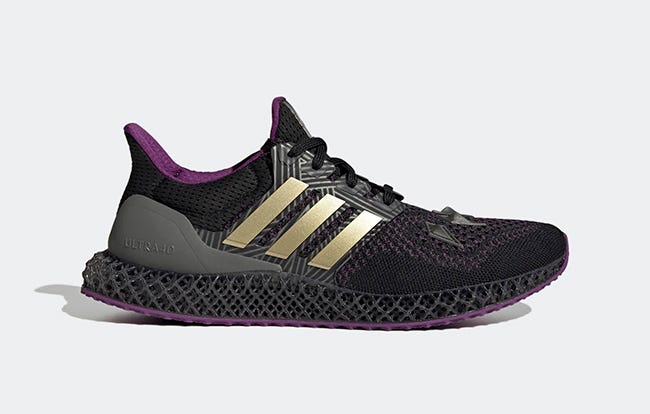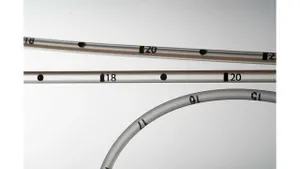Point of Pivot: 3D Printing vs. Injection Molding 50118
3D printing’s sweet spot is in high-value, low-volume production, the opposite of injection molding. Here’s the good, bad, and ugly of both technologies, and advice on when it makes sense to pivot from one to the other.

3D printing first made headlines as a half-Star Trek, half-everyman technology that brought science fiction to the kitchen table. Gassed-up media reports positioned the technology as an “anyone can make anything” process. Unsurprisingly, no such process exists with push-button precision. Mainstream perceptions dimmed, dismissing the technology.
Today’s 3D printing is an indisputably industrial suite, though, with attainable production-level efficiency. Together with the processes, the ways in which we refer to the technology have matured. No longer is “3D printing” or the original “rapid prototyping” the phrase bandied about in most professional labs; now, “additive manufacturing” or, more casually, AM, is the go-to terminology, placing these layer-by-layer processes squarely in the manufacturing realm.
What had been overblown promises about a decade ago are now deliverables: Production, scale, quality, validation, and volume are now end-use realities.
In some cases.
As with any tool in a toolbox, nuance is vital to the appropriate application of solution to challenge. When all you have is a hammer, after all, everything looks like a nail. Today’s toolbox is substantially more robust, leaving us with options and the wherewithal to make informed decisions: When do I need a hammer? When do I need something else?
More to the point: When do I need injection molding and when do I need 3D printing?
Injection molding: The devil you know
|
Lego injection mold. |
Tried and true, injection molding (IM) has made its stand for decades. Patented in the late 1800s, IM boomed decades later as WWII demanded low-cost, high-volume production. It can hardly be said to have slowed since. Nearly ubiquitous in modern manufacturing environments, IM is perhaps best described as the devil you know; it has its kinks and limitations, but it’s familiar and generally reliable. Could IM, though, be displaced by newcomer AM?
The good
Scale, speed, uniformity — injection molding ticks the right boxes for high-volume production. Able to reliably handle a huge array of materials, injection molding offers predictability and quality.
Further, the more the process is used, the more parts are produced, and the more cost-effective the solution becomes.
While an IM setup can be a huge upfront investment, the ROI is huge as its use scales. Indeed, peer-reviewed research indicates that “Injection molding is the best way to mass-produce small, precise polymer components with complex shapes.”
The bad
Injection molding is a well-understood and go-to manufacturing process, but naturally isn’t without its limitations. The learning curve and expense of setting up an IM installation are significant, as is the ramp-up time to actually producing a new design.
Well-known as it may be, the design for manufacturing process for IM is lengthy and often non-linear. As a molding-based technology, IM relies on removable molds, which stifle the ability to design for low part counts and complex internal geometries. Further, creating those molds can add weeks to months to a production timeline.
The ugly
Overall, IM can reliably produce parts with known quality at high quantity — but it takes a while. When lower-volume end-use product runs are required, injection molding may add time and molding costs that counterbalance desirable ROI.
With newer solutions coming to market and proving out their claims, injection molding is poised to lose some of its dominance in production.
3D printing for production
The new kid on the production block, 3D printing, can be an exciting meet-cute — new shapes, complex forms, high-value/low-volume production, all built layer by layer to increasingly exacting standards. Ideated since the 19th century, with modern patents tracing to the 1980s, 3D printing rethinks manufacturing from the first layer. More oversight, standards, and validation are seeing the technology move more into the production world and finally, finally begin fulfilling what had been overblown early promises.
The good
With capabilities in polymers, metals, pastes, and even bio-materials, there are few material areas that 3D printing hasn’t begun to explore. There is, naturally, a hefty chasm between lab exploration and real-world application, and that’s one that 3D printing has begun to bridge tidily.
Mass production with 3D printing is making inroads in areas where it commercially makes sense, with hearing aids the most significant area of early widespread adoption. Consumers are walking on shoes with 3D printed midsoles, purchased at retail, or with personalized insoles made to fit their feet via a smartphone app. Medical products, like prosthetics and orthotics, can also be made specifically for a wearer. Produced together with traditional techniques, 3D printing supplements an overarching process to create next-generation end-use products.
The AM benefits for production are many. Complex internal structures can be incorporated directly into a single finished piece as the full product is produced at one time, reducing part counts as well as weak points of connection. Lightweighting, such as with lattice structures or simply through reduced part count, is desirable in weight-conscious industries like aerospace and automotive, where every ounce matters. A faster time-to-market is also a prime consideration as 3D printers can localize production. Importantly, 3D printing also forestalls the need for tooling, removing a time-intensive stage of many manufacturing processes. More validated materials are coming to market all the time, as well, bringing familiar materials to a new stable.
Further, bridge production is increasingly showing its value as 3D printing begins what injection molding can finish at scale. Especially critical during early days of the COVID-19 pandemic, when personal protective equipment (PPE) and necessary parts for ventilators were in short supply and need-it-now high demand, 3D printing stepped up to outfit medical professionals and patients with what they needed while IM ramped up to meet broader demand. Some remain in use, as 3D printing may have enhanced testing devices’ efficacy.
The bad
AM remains a nascent technology, for all its recent growth and maturation. Adopting the technology for the first time requires a major learning curve as product designers well versed in DFM have a new skill set to gain in DfAM — design for additive manufacturing. Risk-averse sectors where validation is critical and new installations expensive in terms of training and investment are hesitant to adopt before they understand a full ROI. Often, adoption relies on a single internal champion, and AM-using departments tend to run as something of a startup inside an established company.
For all the new materials coming into AM — with giants like Arkema, BASF, Evonik, Henkel, Sabic, and many more dipping their toes in the 3D-printed waters — the overall portfolio is exponentially smaller compared to what’s available for traditional manufacturing.
Standards, while also coming more into play, are also lagging. Many potential adopters cannot even consider 3D printing, as defense and other government-mandated organizations are limited in the scope of processes on the table. Until more standards are recognized and more support comes from all levels — such as with President Biden’s 2022 AM Forward initiative expanding reach nationally, locally, and internationally — adoption will remain lower than theoretically possible.
The ugly
In so many ways, AM remains an unknown quantity. Fewer materials, lower adoption, less training, and slower absolute per-part speeds combine into a difficult formula for adoption. The perception for some “big players” to keep their AM investment and use close to the vest as a “secret sauce” competitive secret also holds back the capability for many AM suppliers to tout their biggest success stories.
Scale solutions shootout: Injection molding vs. additive manufacturing
|
Consumer-ready adidas Marvel Black Panther Ultra 4D shoe with 3D-printed midsole. |
The biggest pro for additive manufacturing is perhaps also its biggest con: The sweet spot is in high-value, low-volume production. This is counterbalanced by injection molding’s sweet spot, which is just the opposite.
So when would it make sense to pivot from IM to AM — and when does it not?
When to pivot to AM
A quick checklist of when it makes sense to pivot production toward AM would include parts that fall under some of these categories:
High-value, highly complex
Personalized/customized
Time-sensitive needs
Bridge production
Part reduction
Lightweighting
Complex internal structures
When to stay the IM course
The single most important thing to keep in mind when adopting AM is a simple one: Just because you can doesn’t always mean you should. It makes the most sense to stick with injection molding for:
High-volume production of the same parts
Standard parts for standard uses
Regulated manufacturing process
Qualified parts with long-established standards
Finished parts off the line
Versus or also?
The strongest use case for any manufacturing process is, at its heart, straightforward. Use what makes sense. There is no single solution to meet every challenge. Each part, each end-use product, has unique specifications and, in an ideal world, should be approached individually. Take the time to understand the exact needs, explore available solutions, and narrow down to what makes the most sense for your application in terms of expense, time, expertise, and final product.
Establishing and understanding the break-even point of cost-versus-quantity will often inform the decision for when to adopt which manufacturing process. Considerations obviously differ from batch sizes of 2 to 25 to 250 to 250,000.
As some of today’s largest applications, like the adidas 3D-printed midsole, highlight, the best ultimate solution is to use the technologies that make sense where they make sense. Often, this is a complementary, rather than an either-or, solution. 3D-printed injection molds, for instance, offer an interesting combination of desirable traits for an overall fitting solution.
About the author
Sarah Goehrke is the founder of AM-specific contract services company Additive Integrity; serves on the Board of Directors and as the Head of DEI at Women in 3D Printing; and sits on the Board of Advisors for the Additive Manufacturing Coalition. She focuses in the additive manufacturing industry on advances in diversity, sustainability, and ecosystem positioning with a heightened focus on messaging. Goehrke has been a leader in the 3D-printing industry since 2014, previously serving as the Managing Editor of Fabbaloo; Editor-in-Chief of 3DPrint.com; and Senior Director, Strategic Communications and Ecosystems at ultrafast 3D-printing leader Nexa3D. Through Additive Integrity, she has worked with more than two dozen companies across the industry, contributed to publications including Forbes.com, and keynoted across three continents. She is deeply and actively passionate about advancing diversity, equity, and inclusion in the 3D-printing industry. Goehrke holds bachelor’s degrees in English and Theatre from Muskingum College, as well as a certificate in Diversity & Inclusion for HR from Cornell University.
About the Author(s)
You May Also Like






